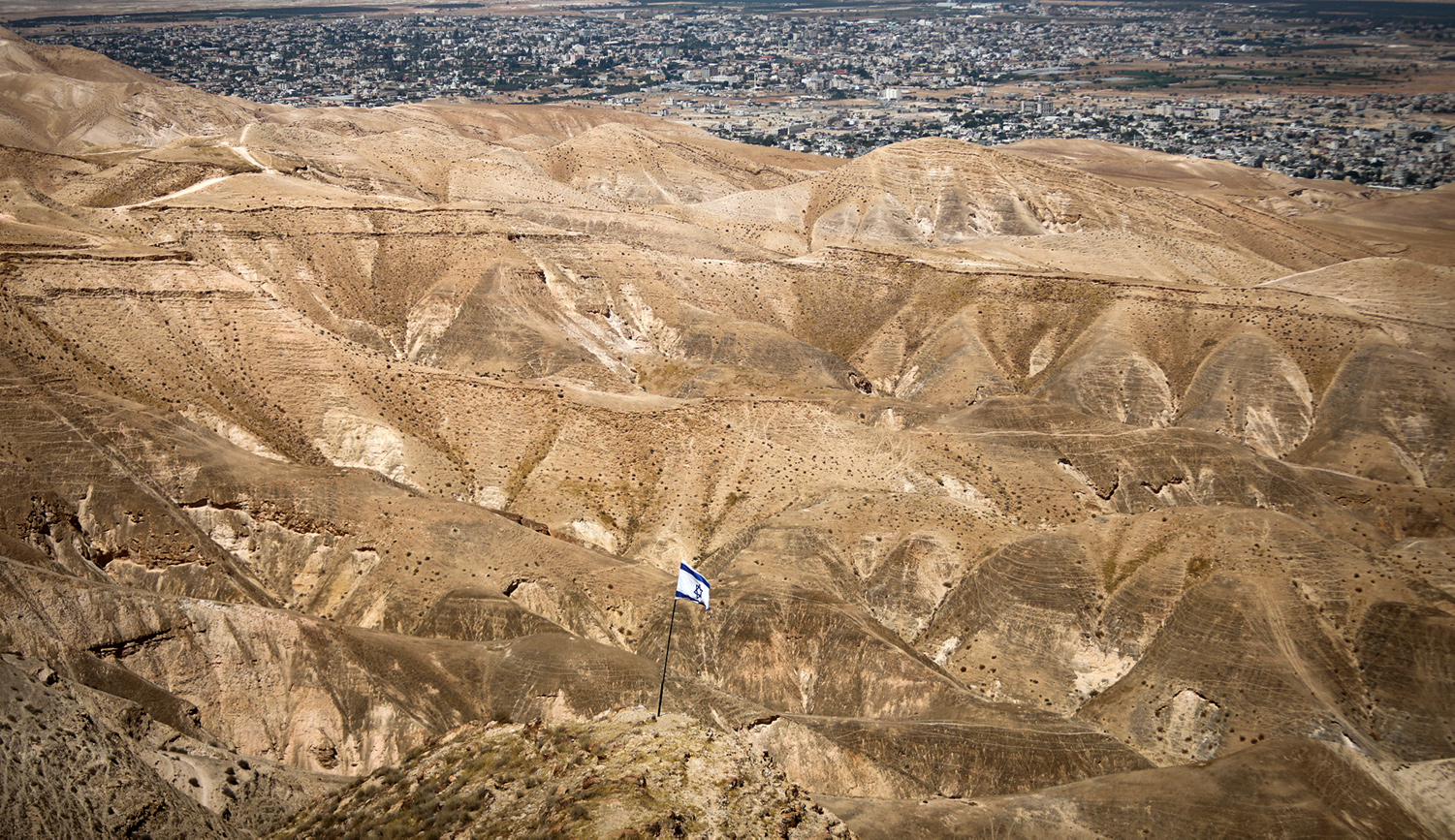Imagine what Israel would look like now if it had declined to apply its law to eastern Jerusalem in late June 1967, just after the Six-Day War.
Israel did not then describe that action as an annexation of the part of the city formerly occupied by Jordan. Rather, it passed a law extending the “law, jurisdiction, and administration of the State,” and incorporating eastern Jerusalem—as well as areas of the West Bank outside of it—into the existing Israeli municipality of Jerusalem.
Israel’s action cemented the Jewish claim to Jerusalem, and by extension the legitimacy of its claims to those areas of the land occupied by Jordan from 1949 to 1967. It put down an important marker that it would not part with this territory lightly. And perhaps most importantly, the technical integration of eastern Jerusalem under Israeli law allowed Jews to move and build there easily, and to relate to it in their minds as part of Israel itself. Today, roughly half as many Jews live just in Jerusalem’s eastern neighborhoods as in all of the West Bank combined. This normalization would have been impossible without the application of Israeli law.
Yet at the time, the extension of Israeli law was not met by immediate international acceptance, to put it mildly. The United Nations Security Council condemned the move; not a single nation supported it. But it created a new reality, which, through the slow gravitational force of history, eventually pulled in supporters. We are just now seeing the fruits of this decision. It would be a full half century until any country recognized Israel’s sovereignty in eastern Jerusalem, and when the United States did so in 2017, a slow trickle of other countries began to follow suit. Indeed, the U.S. even moved its embassy to a part of the city that only came under Israeli law as a result of the 1967 measure.
All of this would have been impossible had Israel not staked its claim in the face of opposition. Nor did the application of Israeli law to such a small part of the West Bank imply that Israel had abandoned its claims to the rest of it, or conceded to a Palestinian state there.
In short, Israeli history as we know it would have surely taken a different and worse course had Israel not applied its law to Jerusalem and its environs when it had the chance, in the immediate euphoria and international shock after the Six-Day War. Since then, those who believe in the legitimacy and practical necessity of applying Israeli law to additional parts of the West Bank have doggedly pursued this goal, starting with the Labor-backed Allon Plan of the late ‘60s that would have applied Israeli law to the Jordan Valley.
Yet for 53 years Israel has failed to do so. There are a number of reasons. The most formidable has been the opposition of the international community, including even of the U.S., Israel’s greatest ally. This has been related to the hope, shared by Israel, that deferring the extension of Israeli law would lead the Palestinians promptly to come to the table and negotiate a peaceable settlement. Applying Israeli law would be pointless if one thought that it would soon thereafter be un-applied in an imminent diplomatic deal.
That hope has proven illusory. Israelis can no longer abide having the status of these communities and their inhabitants held hostage to Palestinian rejectionism. At the same time, the patience and hopefulness that kept Israel from applying Israeli law has not brought international goodwill. Quite the opposite: Israel’s delay has undermined the perceived international legitimacy of its position. The delay has encouraged the Palestinians to believe that Israel would agree to unrealistic territorial concessions. And the delay has made the development of the Jewish communities living in legal limbo much more difficult. That is why today Israel’s broad coalition government, encompassing both the left and the right, finally stands ready to take this step.
In the coming weeks, Israel will have another historic opportunity to change the trajectory for the next century, this time with the added advantage of open U.S. support. Yet some supporters of Israel’s presence in the West Bank, including a few settler leaders, have come out against this plan—using arguments that would have stopped even the application of Israeli law to Jerusalem. The consequences of their misguided opposition will be dire.
The opposition of some right-wing figures to the plan is based on a fundamental misapprehension about what the planned action entails, and what the plan means. So, it is crucial to explain what Israel contemplates doing in the coming months, and how its actions will affect its relation to the U.S. government in light of the Trump administration’s January 2020 document outlining its “Vision for Peace.”
Here is what will happen. Just as it did to Jerusalem, Israel is planning to apply its civil law to all Israeli settlements and their immediate environs, as well as the Jordan Valley, demonstrating its belief that its presence there is legitimate. The Trump administration plans to recognize Israeli sovereignty over these areas. All of this has nothing to do with the Vision for Peace, and these steps are not part of that document. The Vision addresses the process and expectations of Israel-Palestinian negotiations once they begin—and, for a variety of reasons, they may be never begin. Without negotiations, the Vision has no applicability. Yet the Trump administration is willing to recognize Israeli sovereignty now because it is right, and in order to show that the Palestinians can no longer hold everything hostage.
The Trump administration has already declared that Israeli settlements are not illegal. And it has had the clarity to recognize that no peace agreement can come from the expulsion of Jews from their homes; indeed, a Palestinian leadership that insists on a territory pre-cleansed of Jews is not actually talking about peace. Thus, the administration sees no problem with recognizing Israeli sovereignty over the territory, whether or not the Vision ever comes into effect.
At the same time, Israel will agree for four years not to build homes in the other part of area C—the part of the West Bank currently under full Israeli control. It is inaccurate to describe this, as some settler leaders have, as a new “settlement freeze.” The other part of area C is where Israel has not built anything in 53 years; all the areas where building has occurred will be under full Israeli law. This is hardly the creation of a Palestinian state.
Yet that is the principal criticism now heard from the right: that applying Israeli law to part of Area C means everything else becomes a Palestinian state. Maps being circulated by right-wing groups show an alarming picture: the 30 percent to which Israeli law will be applied engulfed, and sometimes entirely encircled, by a Palestinian state. They claim that this is the consequence of applying Israeli law, and that it is not worth it.
These maps are a photo-negative inversion of reality. When Israel applies its law to these territories with U.S. backing it will cede control of nothing. The day after, the areas around those places incorporated into Israel will not be part of a Palestinian state. Even residents of isolated settlements will not be driving through Palestinian territory. They will be living in fully sovereign Israeli territory, and they will drive through Israeli-military administered territory. It is hard to see how this is worse than the current situation, where they live and drive in military-administered territory. The application of Israeli law, far from stunting the development of these communities, will make their growth much easier—as the comparison between post-1967 neighborhoods in Jerusalem and settlements shows.
Nor does the fact of Israel’s applying its law only to part of the West Bank concede its rights to any other area, just as the Jerusalem law did not concede it. However, things are in a different position today than in 1967. If Israel fails to expand the application of its laws beyond Jerusalem—if the critics have their way—when given the clear opportunity it now has, it will become harder to argue that it does not view itself as a temporary occupier.
Israel does agree, in the proposed arrangement, to negotiate with the Palestinians in accordance with the parameters of the Vision. This is not an Israeli concession: every Israeli prime minister for the past three decades has agreed to negotiate. But now there is a difference, for the Vision does not make negotiation an end in itself, nor does it posit a Palestinian state as the inevitable result of such a process. Rather, the Vision imposes detailed and concrete conditions on the actual conduct of negotiations, and on the ultimate attainment of some kind statehood.
Those conditions are essential for Israeli security, and they will not be easy for the Palestinians to meet. In peace negotiations, the Vision requires the Palestinians immediately to end payments to those who commit terror and to their families, to stop the International Criminal Court (ICC) investigation into Israel, and more. Israel need not negotiate with the Palestinians unless this happens. And as long as the Palestinian Authority continues to put the payment of terrorist salaries ahead of its own solvency, these conditions won’t soon be met. I believe the Palestinians will again forego negotiations for a state that they have repeatedly made clear they do not want.
The precise cause of the mistake right-wing critics make is hard to ascertain. It is as if the critics searched the PDF of the plan for the words “Palestinian state,” and, upon finding it, rejected the Vision without reading what it actually says about it.
The plan’s opponents on the right do not understand that if the Vision’s preconditions for direct negotiations were ever realized by a Palestinian government, then there would be overwhelming international and domestic pressure on any Israeli government regardless of its application of Israeli law in the West Bank. That is, assume that the Palestinian Authority were, in the coming years, to end its pay-for-slay program, to end all incitement against Jews, to end its use of the ICC and other international organizations to hound Israel, to develop an open democracy that respects human rights, to disarm Hamas and take responsibility for Gaza, and to reject the use of demographic tools to end Israel (“the right of return”), and on top of all of that, assume that it agrees to all the other aspects of the Vision, including Israeli sovereignty over Jerusalem. If these requirements—all detailed in the Vision—were to come about, then in that case Israel would find itself negotiating regardless of whether it applies Israeli law now or not.
The odds are overwhelmingly against that scenario. The real question that those on the right should be asking is whether applying Israeli law now, with American recognition, leaves Israel better off for the more probable future situation: a Palestinian government that does not change its stripes, combined with a possible U.S. administration that could resume the trajectory that the Obama administration was on when it allowed to pass in 2016 UN Security Council Resolution 2334, stating that “the establishment by Israel of settlements in the Palestinian territory occupied since 1967, including East Jerusalem, has no legal validity and constitutes a flagrant violation under international law.”
Should that scenario come to pass, Israel will face great pressure regardless of whether it extends its law now or not. Four years ago, President Obama came close to allowing the Security Council to recognize a Palestinian state in all of the West Bank and Gaza. Israel needs to be prepared to face that situation again.
American recognition is not the essence of the application of Israeli sovereignty. The essence is Israel’s clear statement of its rights, and its refusal to expel its citizens from its homeland. But Israel must also recognize this geopolitical moment in history, just as it once did in eastern Jerusalem. The status quo marks the point from which pushback by a future American administration will occur. If Israel extends its law, a Democratic administration may very well work to undo it. But if Israel squanders this opportunity, if it simply maintains the status quo, a less friendly White House may not simply be satisfied with resisting what a rising tide of political activists views as an apartheid-like occupation and denial of Palestinian self-determination. If Israel, swayed by a few loud voices on the right, does nothing now, it may be forced to give up even more.
More about: Annexation, Examining Israel’s Eastern Borders: A Symposium, Israel & Zionism, West Bank








